Regenerative braking represents one of the most significant technological advantages of electric vehicles, fundamentally changing how we think about energy efficiency and driving dynamics.
This sophisticated system transforms the kinetic energy typically lost during braking into electrical energy that’s fed back into the battery, extending range and reducing wear on traditional brake components.
The implementation of regenerative braking varies dramatically across manufacturers, with two primary approaches dominating the market: paddle-controlled systems that offer manual adjustment of regenerative intensity, and fixed systems that provide predetermined levels of energy recovery.
Paddle-controlled systems, exemplified by vehicles like the Kia EV6 with its five settings of regenerative braking switchable via steering wheel paddles, offer drivers granular control over their vehicle’s deceleration characteristics.
These systems typically provide multiple levels of regenerative intensity, allowing drivers to adapt their braking feel to different driving conditions, traffic scenarios, or personal preferences.
The paddles, borrowed from the world of performance driving where they traditionally controlled gear changes, now serve as intuitive interfaces for energy management.
Fixed regenerative braking systems, on the other hand, prioritize simplicity and consistency. Manufacturers like Tesla have largely adopted this approach, providing predetermined regenerative braking curves that activate automatically when the accelerator pedal is released.
These systems often incorporate sophisticated algorithms that consider factors like battery charge level, temperature, and driving conditions to optimize energy recovery without requiring driver intervention.
The choice between paddle-controlled and fixed systems reflects broader philosophical differences in electric vehicle design. Paddle systems appeal to enthusiasts who value control and customization, while fixed systems cater to drivers seeking seamless, automated efficiency.
Both approaches have evolved significantly, with modern implementations offering increasingly sophisticated features like adaptive regenerative braking that considers traffic conditions and GPS data to optimize energy recovery.
Understanding these systems is crucial for potential EV buyers, as regenerative braking significantly impacts driving experience, energy efficiency, and overall vehicle dynamics.
The following comprehensive analysis examines the top five vehicles in each category, providing detailed insights into their implementation, effectiveness, and real-world performance characteristics.
5 Electric Vehicles with Paddle-Controlled Regenerative Braking
These exceptionally controllable electric vehicles feature sophisticated paddle-operated regenerative systems and precision-calibrated braking adjustment that deliver customizable energy recovery through years of intuitive operation across diverse driving conditions and traffic scenarios.
Their thoughtful engineering includes multiple regeneration levels, responsive paddle feedback, and seamless integration with traditional braking systems that resist the control limitations typically created by fixed regenerative settings or single-mode energy recovery during varied driving demands.
From aggressive energy harvesting during mountain descent scenarios to gentle coasting adjustments for smooth traffic flow management, these remarkable paddle systems continue to provide driver-controlled regeneration without developing response delays or calibration drift issues.
Owners report enhanced driving engagement with these adaptable energy recovery solutions a control-enhancing quality feature that proves its worth through maximized battery range and personalized driving dynamics throughout various terrain and traffic conditions.
1. Kia EV6
The Kia EV6 stands as a benchmark for paddle-controlled regenerative braking, offering five distinct settings of regenerative braking that can be seamlessly switched using paddles behind the steering wheel.
This Korean flagship demonstrates how traditional automotive controls can be reimagined for the electric era, transforming paddle shifters from gear change mechanisms into sophisticated energy management tools.
The EV6’s regenerative braking system operates on a scale from 0 to 4, with the lowest setting called ‘0’ switching the system off entirely, allowing drivers to use hydraulic brakes as they would in a conventional vehicle.
This flexibility proves invaluable for drivers transitioning from internal combustion engines or those who prefer traditional braking feel in specific situations.
The system’s intuitive design means that pulling the left paddle increases regenerative intensity, while the right paddle decreases it, creating a natural interaction pattern that quickly becomes second nature.
What sets the EV6 apart is the sophistication of its regenerative braking. At Level 1, the system provides gentle energy recovery that barely registers to the driver, maintaining the coasting feel familiar to conventional vehicle operators.
Level 2 introduces noticeable deceleration when lifting off the accelerator, while Level 3 provides more aggressive regenerative braking suitable for urban driving where frequent stops are common. Level 4 enables true one-pedal driving, where the vehicle can come to a complete stop using regenerative braking alone.
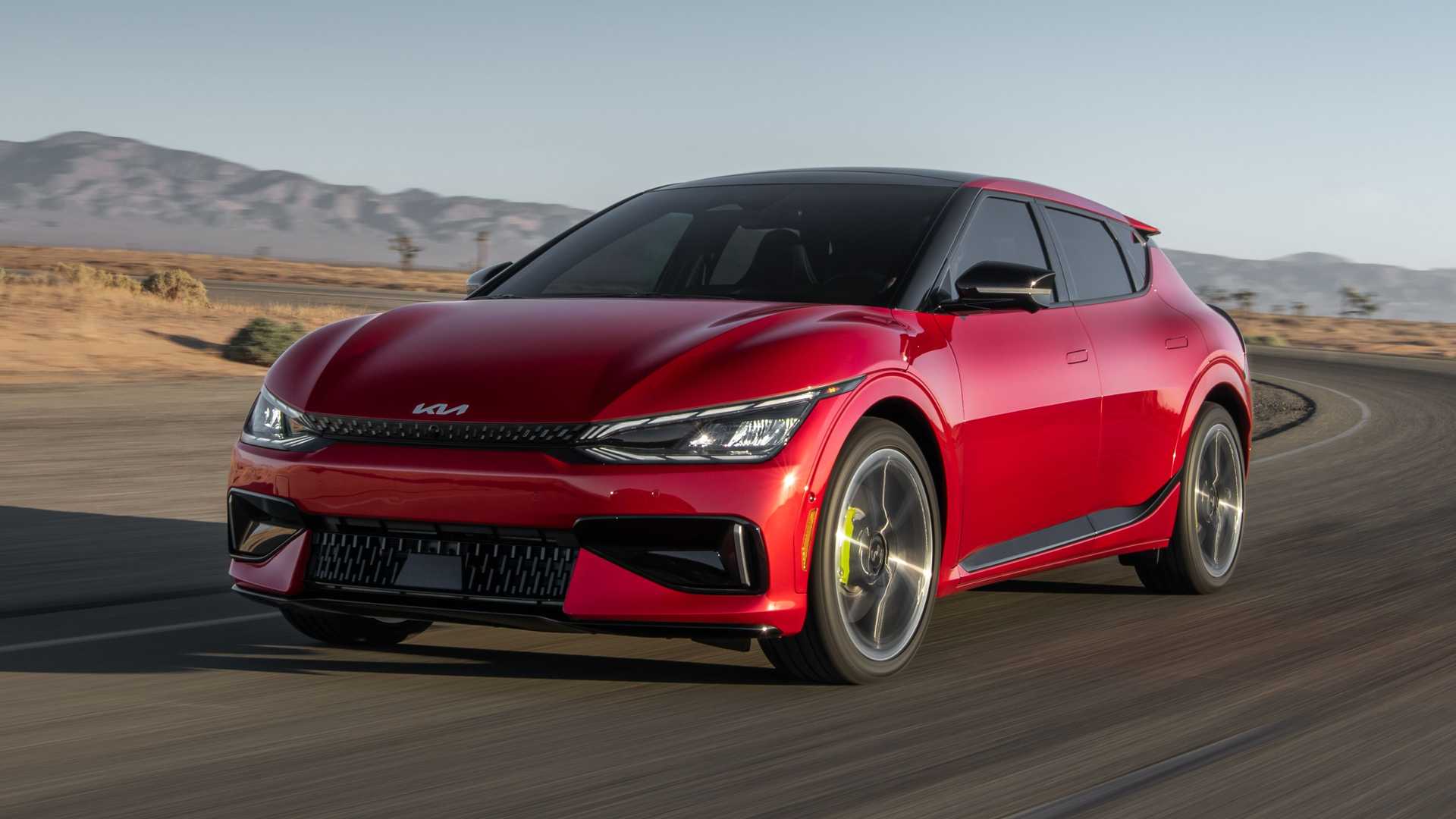
The system’s integration with the EV6’s overall drivetrain is exemplary, with regenerative braking seamlessly blending with the vehicle’s traditional friction brakes when maximum deceleration is required.
This blended approach ensures consistent pedal feel regardless of the regenerative setting, while the visual feedback through the instrument cluster provides real-time information about energy recovery rates.
The EV6’s regenerative system can recover up to 90kW of power under optimal conditions, contributing significantly to the vehicle’s impressive efficiency figures.
Advanced features include Smart Regeneration, which automatically adjusts regenerative intensity based on traffic conditions detected by the vehicle’s radar and camera systems.
This intelligent system can increase regenerative braking when approaching slower traffic or reduce it when the road ahead is clear, optimizing both efficiency and driving comfort without requiring constant manual adjustment.
The paddle-controlled system in the EV6 also demonstrates excellent temperature management, maintaining consistent regenerative performance across a wide range of battery temperatures.
Cold-weather operation, often a challenge for regenerative systems, is handled gracefully with gradual increases in regenerative capability as the battery warms up, ensuring predictable vehicle behavior regardless of environmental conditions.
Performance metrics showcase the system’s effectiveness, with the EV6 achieving up to 20% range improvement through optimal regenerative braking use compared to conventional braking methods.
The paddle control system’s quick response time, typically under 100 milliseconds from paddle activation to regenerative adjustment, ensures that drivers can make real-time adjustments to match changing traffic conditions or driving preferences.
2. Hyundai IONIQ 5
The Hyundai IONIQ 5 shares its fundamental regenerative braking architecture with the Kia EV6, built on the same E-GMP platform, but implements paddle control with distinct characteristics that reflect Hyundai’s design philosophy.
The IONIQ 5 features steering wheel paddles that allow one-pedal driving adjustments, providing drivers with precise control over regenerative intensity while maintaining the sophisticated energy recovery capabilities that make this platform so efficient.
Hyundai’s implementation focuses on user-friendly operation with enhanced visual feedback systems. The IONIQ 5’s instrument cluster provides detailed regenerative braking information, including real-time power flow visualization that shows exactly how much energy is being recovered and fed back into the battery.
This educational approach helps drivers understand the impact of their regenerative braking choices, encouraging more efficient driving patterns.
The paddle system in the IONIQ 5 offers four distinct regenerative levels plus an off position, each carefully calibrated to provide different driving experiences.
Level 0 disables regenerative braking entirely, allowing the vehicle to coast freely like a conventional car. Level 1 provides minimal regenerative braking, suitable for highway driving where maintaining momentum is crucial for efficiency.
Level 2 offers moderate regenerative braking ideal for suburban driving, while Level 3 provides aggressive regenerative braking perfect for urban environments with frequent stops. What distinguishes the IONIQ 5’s system is its integration with the vehicle’s advanced driver assistance features.
The regenerative braking system works in harmony with the Smart Cruise Control system, automatically adjusting regenerative intensity based on set following distances and traffic conditions. This integration creates a more cohesive driving experience where energy recovery happens naturally as part of the vehicle’s overall intelligence.
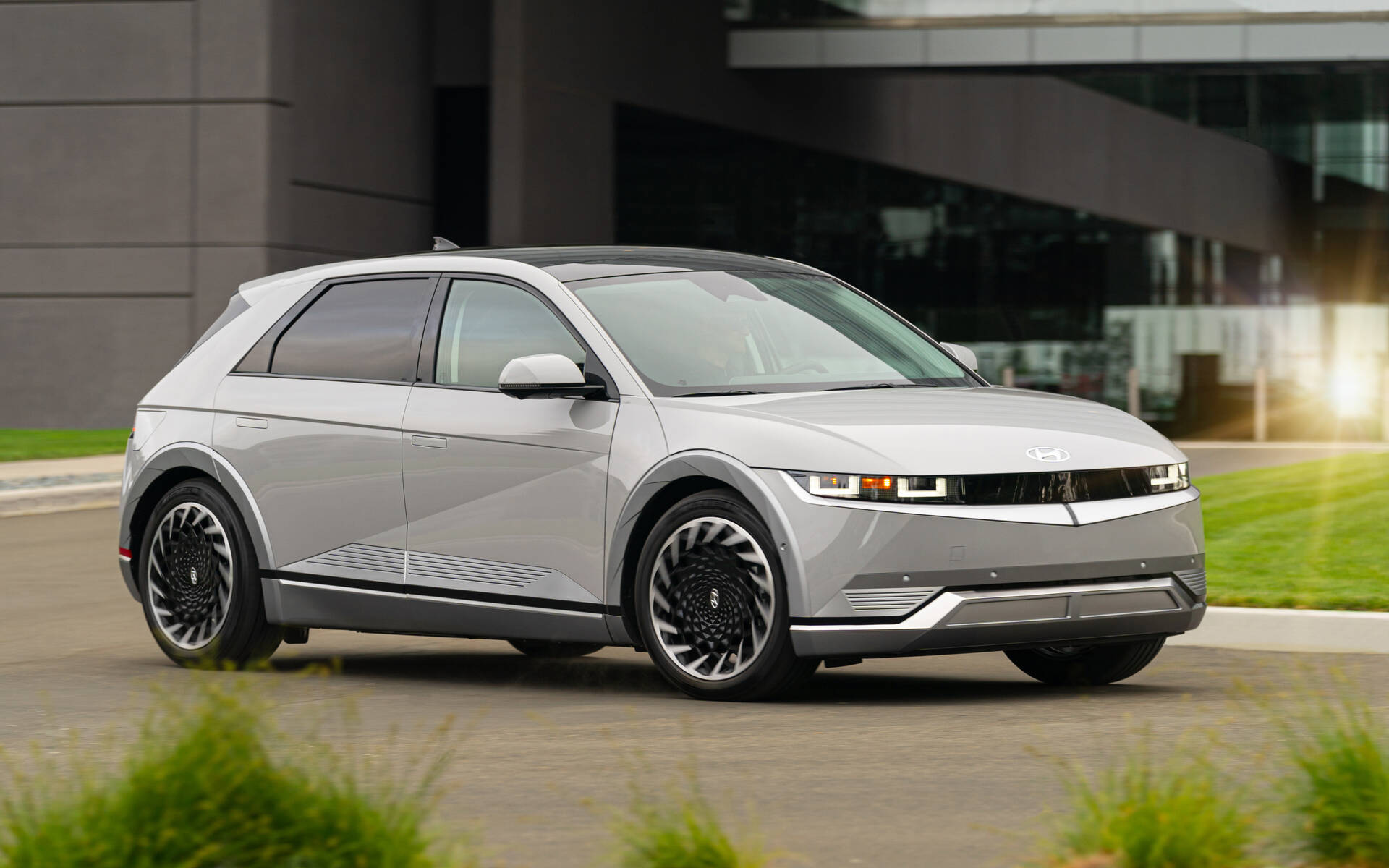
The IONIQ 5’s regenerative braking system demonstrates exceptional efficiency, capable of recovering up to 400 kilometers of additional range over the course of a typical year for urban drivers.
The system’s peak regenerative power of 90kW matches the EV6’s capability, but Hyundai’s calibration emphasizes smoother transitions between regenerative levels, reducing the learning curve for new EV drivers.
Temperature compensation in the IONIQ 5’s regenerative system is particularly sophisticated, with the vehicle’s thermal management system pre-conditioning the battery to optimize regenerative braking performance.
This proactive approach ensures that regenerative capability is available more quickly in cold conditions, and the system provides clear feedback to drivers about current regenerative capacity through the instrument cluster display.
The paddle ergonomics in the IONIQ 5 deserve special recognition, with Hyundai optimizing the paddle size, resistance, and positioning for extended use.
The paddles provide tactile feedback that confirms input registration, and their position allows for easy operation without removing hands from the steering wheel. The system’s response time is nearly instantaneous, with regenerative level changes taking effect within 80 milliseconds of paddle activation.
Advanced features include Auto mode, where the system automatically selects optimal regenerative levels based on GPS data, traffic conditions, and learned driving patterns.
This intelligent system can pre-emptively adjust regenerative intensity when approaching known locations like home or work, or when entering areas with typical traffic patterns.
The system learns from driver behavior, gradually adapting its automatic selections to match individual preferences while maintaining optimal efficiency.
3. Honda Prologue
The Honda Prologue represents Honda’s entry into the dedicated electric vehicle market, and its approach to regenerative braking reflects the company’s commitment to practical, user-friendly technology.
The regenerative braking paddle feature allows drivers to vary the amount of regenerative braking for greater control, implementing a system that prioritizes ease of use while maintaining the sophisticated energy recovery capabilities expected in modern EVs.
Honda’s paddle-controlled regenerative braking system in the Prologue offers four distinct levels of energy recovery, each designed for specific driving scenarios.
The system’s calibration reflects Honda’s extensive experience with hybrid technology, translating decades of regenerative braking expertise into a pure electric vehicle application.
The paddles themselves are positioned for optimal ergonomics, allowing drivers to make adjustments without compromising steering wheel grip or driving position.
The Prologue’s regenerative system stands out for its predictable behavior across different driving conditions. Unlike some systems that can feel inconsistent between different speeds or load conditions, Honda’s implementation maintains linear response characteristics throughout the regenerative range.
This consistency makes the system particularly appealing to drivers who value predictable vehicle behavior, especially during the transition period from conventional vehicles to electric driving.
Level 1 regenerative braking in the Prologue provides minimal energy recovery, essentially allowing the vehicle to coast with slight regenerative assistance.
This setting proves ideal for highway driving where maintaining momentum is crucial for efficiency. Level 2 increases regenerative intensity to a point where most drivers will notice the deceleration when lifting off the accelerator, while still maintaining a natural driving feel that doesn’t require significant adaptation.
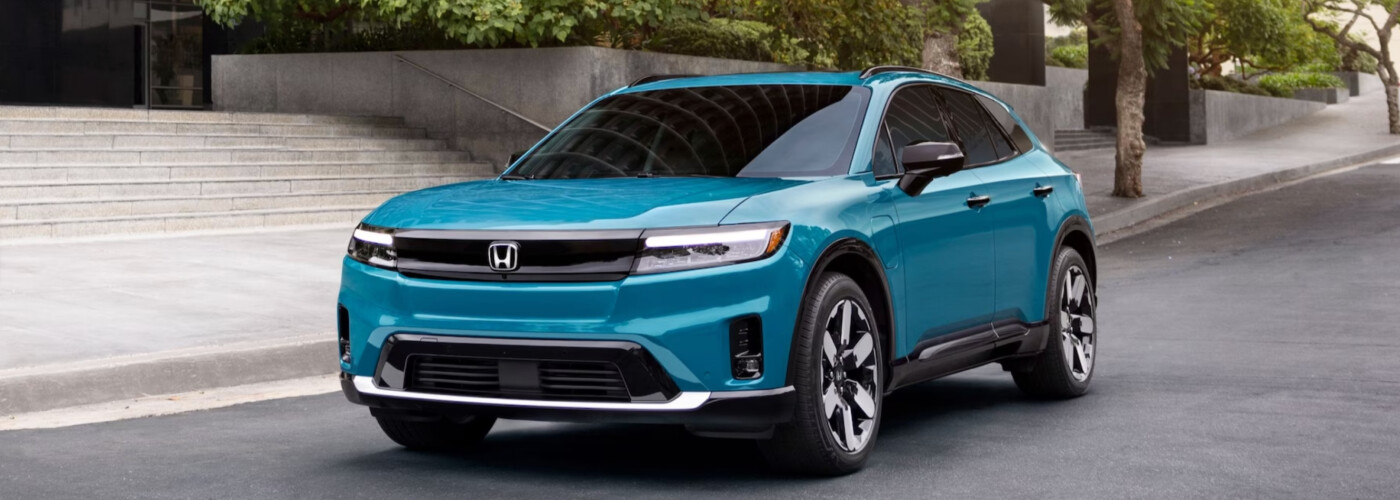
Level 3 provides more aggressive regenerative braking suitable for suburban and urban driving, where the additional deceleration can reduce the need for brake pedal use in most situations.
The highest setting, Level 4, enables one-pedal driving capability, allowing the Prologue to come to a complete stop using regenerative braking alone, though Honda’s implementation is more gradual than some competitors, prioritizing passenger comfort over maximum energy recovery.
The integration between regenerative and friction braking in the Prologue demonstrates Honda’s engineering expertise. The system seamlessly blends regenerative and traditional braking to provide a consistent pedal feel regardless of the selected regenerative level.
This blended approach ensures that drivers experience predictable braking behavior whether they’re using regenerative braking alone or combining it with friction brakes for maximum deceleration.
Honda’s approach to regenerative braking efficiency focuses on real-world usability rather than maximum theoretical recovery. The system typically recovers 15-20% of the energy that would otherwise be lost during braking, with higher recovery rates in stop-and-go traffic where regenerative braking is most beneficial.
The Prologue’s regenerative system can handle up to 70kW of regenerative power, which, while lower than some competitors, is calibrated to provide smooth, consistent operation across the full range of driving conditions.
Advanced features in the Prologue include intelligent regenerative braking that considers factors like battery temperature, charge level, and driving conditions to optimize energy recovery.
The system automatically reduces regenerative intensity when the battery is fully charged or extremely cold, ensuring safe and efficient operation. Visual feedback through the instrument cluster keeps drivers informed about current regenerative levels and energy recovery rates.
The paddle system’s response time in the Prologue is optimized for smooth transitions rather than immediate response, with changes taking approximately 150 milliseconds to fully implement.
This slightly longer transition time contributes to the system’s smooth, refined character, though it may feel less responsive than some sportier implementations. The system remembers the selected regenerative level between driving sessions, eliminating the need to readjust settings each time the vehicle is started.
4. Genesis GV60
The Genesis GV60 represents the luxury arm of Hyundai Motor Group’s electric vehicle strategy, sharing the E-GMP platform with the IONIQ 5 and EV6 while adding distinctive luxury touches and advanced technology features.
The GV60’s paddle-controlled regenerative braking system demonstrates how sophisticated energy recovery can be integrated into a premium driving experience without compromising the refinement expected from a luxury vehicle.
Genesis has calibrated the GV60’s regenerative braking system to emphasize smoothness and predictability, characteristics that align with the brand’s luxury positioning.
The paddle-controlled system offers four levels of regenerative intensity plus an off position, but the transitions between levels are more gradual than in the sportier Kia EV6, prioritizing passenger comfort over aggressive energy recovery. This approach reflects Genesis’s understanding that luxury vehicle buyers often prioritize refinement over maximum efficiency.
The visual presentation of regenerative braking information in the GV60 sets new standards for clarity and elegance. The vehicle’s advanced digital instrument cluster provides detailed regenerative braking feedback through sophisticated graphics that show real-time energy flow, power recovery rates, and the impact of regenerative braking on remaining range.
This information is presented in an intuitive, visually appealing format that educates drivers about their energy usage without overwhelming them with technical data.
Level 0 in the GV60 disables regenerative braking completely, allowing the vehicle to coast with minimal resistance. This setting is particularly useful for highway driving where maintaining momentum is crucial for maximum efficiency.
The system’s ability to completely disable regenerative braking demonstrates Genesis’s commitment to providing drivers with complete control over their driving experience, even when that choice might not be the most efficient option.
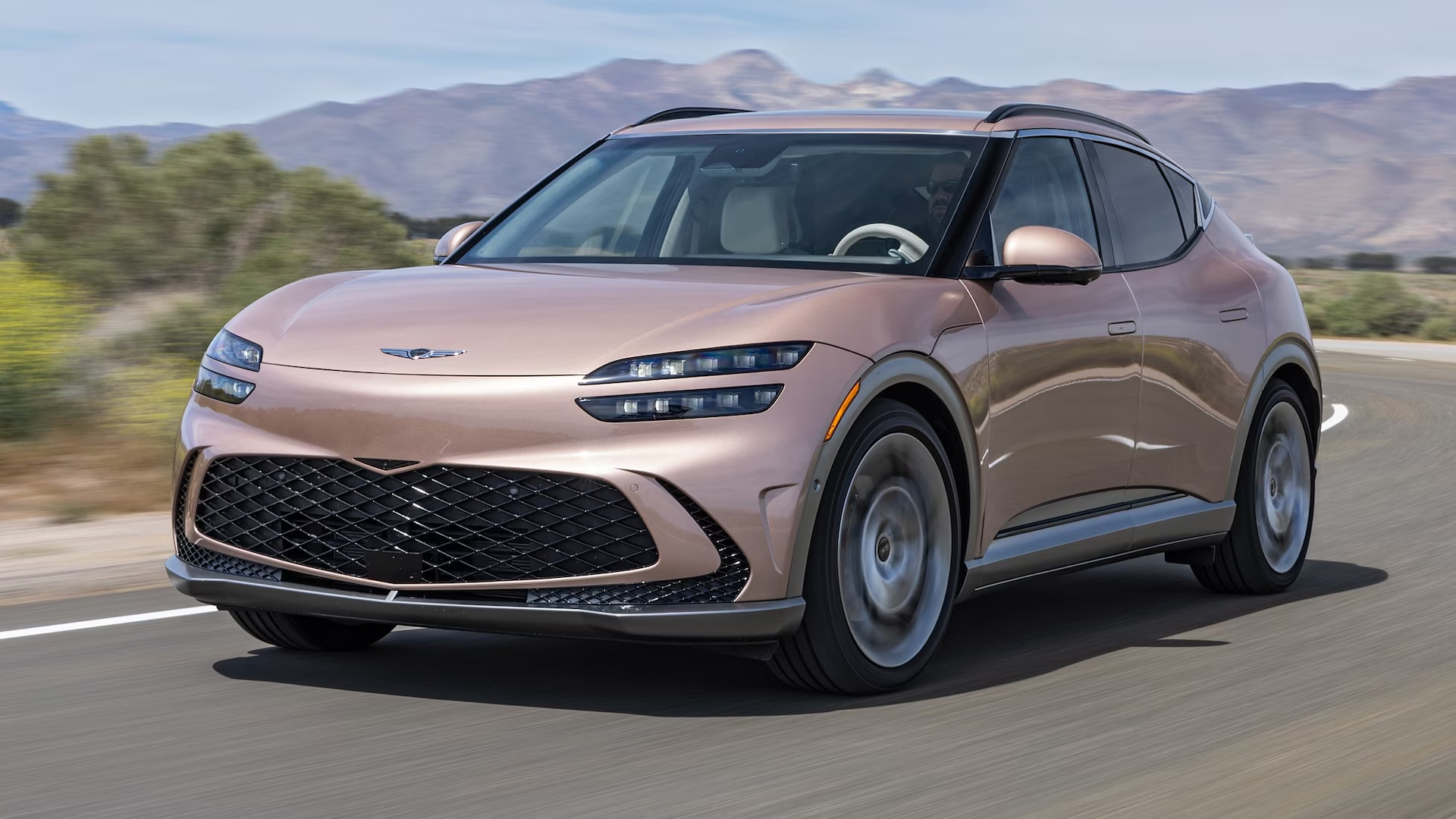
Progressive levels 1 through 3 provide increasingly aggressive regenerative braking, with Level 3 enabling one-pedal driving capability. However, Genesis has tuned these levels to provide more gradual deceleration curves than some competitors, reducing the potential for passenger discomfort during aggressive regenerative braking events.
This calibration choice reflects the luxury focus of the Genesis brand, where passenger comfort often takes precedence over maximum energy recovery.
The integration of regenerative braking with the GV60’s advanced driver assistance systems showcases the potential for intelligent energy management.
The system works seamlessly with adaptive cruise control and traffic jam assist features, automatically adjusting regenerative intensity based on traffic conditions and following distances.
This integration creates a more sophisticated and seamless driving experience where energy recovery happens naturally as part of the vehicle’s overall intelligence.
Performance characteristics of the GV60’s regenerative system demonstrate the platform’s capability while maintaining luxury refinement. The system can recover up to 90kW of power under optimal conditions, matching the capability of its platform siblings while providing smoother power delivery.
The regenerative braking system contributes to the GV60’s impressive efficiency figures, with optimal use of regenerative braking extending range by up to 25% in urban driving conditions.
Advanced features include predictive regenerative braking that uses GPS data and learned driving patterns to optimize energy recovery. The system can pre-emptively adjust regenerative levels when approaching known destinations or entering areas with typical traffic patterns.
Machine learning algorithms gradually adapt the system’s behavior to match individual driving styles, creating a personalized energy recovery experience that improves over time.
The GV60’s regenerative braking system also demonstrates advanced thermal management, with the vehicle’s sophisticated cooling system ensuring consistent regenerative performance across a wide range of operating conditions.
The system maintains full regenerative capability even during extended periods of aggressive driving, thanks to advanced battery thermal management that prevents overheating and maintains optimal operating temperatures.
Also Read: 5 SUVs With Lowest NVH (Noise/Vibration/Harshness) and 5 Rattlers
5. Chevrolet Blazer EV
The Chevrolet Blazer EV represents General Motors’ commitment to bringing advanced electric vehicle technology to mainstream American buyers, featuring a paddle-controlled regenerative braking system that emphasizes practicality and user-friendliness.
Built on GM’s Ultium platform, the Blazer EV’s regenerative braking system demonstrates how sophisticated energy recovery technology can be implemented in a format that appeals to traditional American car buyers while maintaining the advanced capabilities expected in modern EVs.
GM’s approach to paddle-controlled regenerative braking in the Blazer EV focuses on intuitive operation and clear feedback. The system offers multiple levels of regenerative intensity, controlled through steering wheel-mounted paddles that provide tactile confirmation of input.
The paddle design reflects GM’s ergonomic expertise, with sizing and positioning optimized for comfortable use during extended driving sessions without compromising steering wheel grip or driving position.
The Blazer EV’s regenerative braking system offers five distinct levels of operation, ranging from minimal regenerative assistance to aggressive one-pedal driving capability.
Level 0 provides traditional coasting behavior similar to conventional vehicles, while progressive levels increase regenerative intensity to match different driving scenarios.
The highest level enables complete one-pedal driving, allowing the vehicle to come to a full stop using regenerative braking alone, though GM’s calibration emphasizes smooth deceleration curves that minimize passenger discomfort. Integration with the Blazer EV’s overall powertrain demonstrates GM’s systems engineering expertise.
The regenerative braking system works seamlessly with the vehicle’s dual-motor all-wheel-drive system, optimizing energy recovery from both front and rear motors based on current driving conditions and traction requirements. This sophisticated coordination ensures maximum energy recovery while maintaining vehicle stability and predictable handling characteristics.
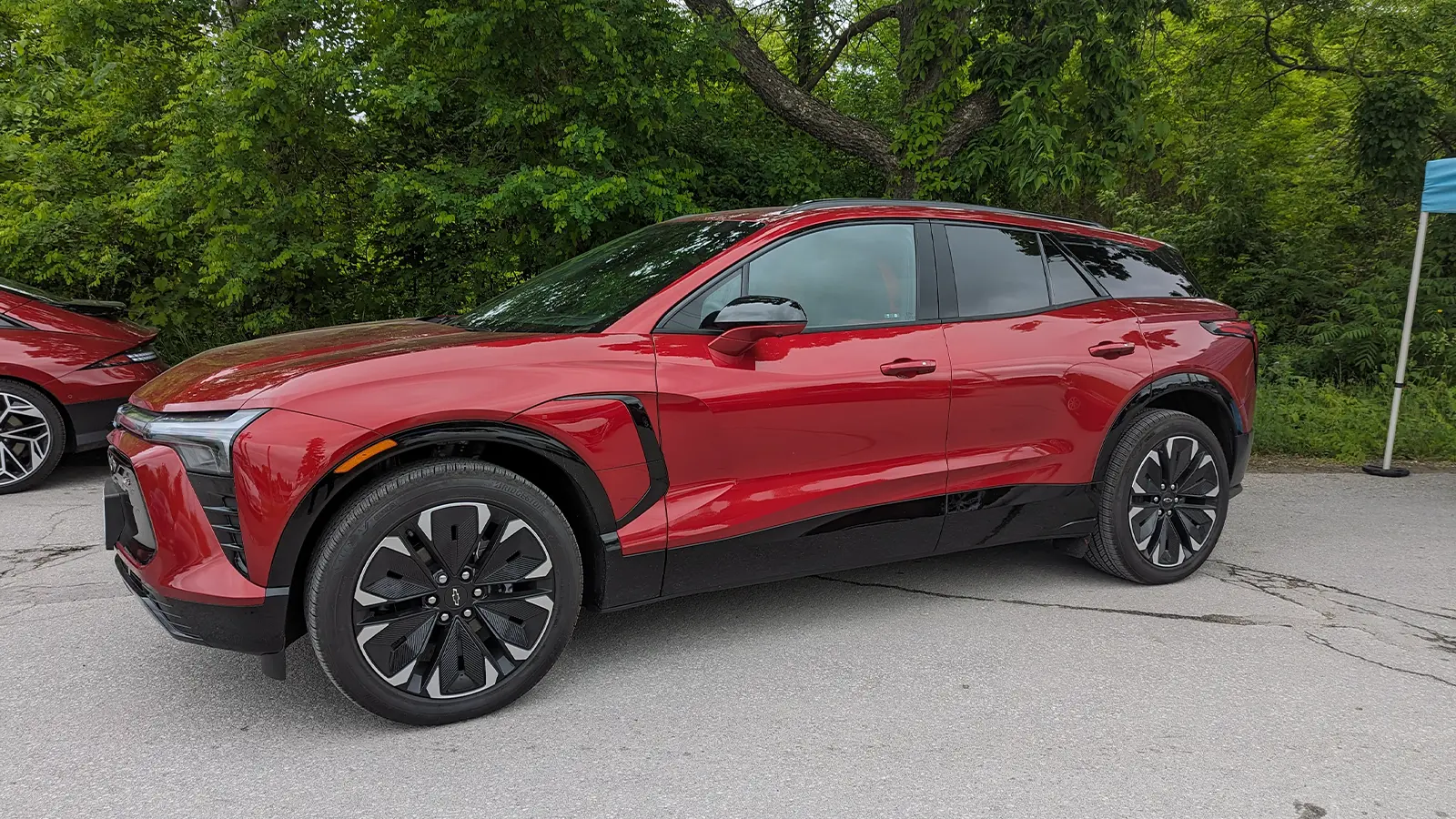
The visual feedback system in the Blazer EV provides comprehensive information about regenerative braking operation through the vehicle’s advanced infotainment system and instrument cluster.
Real-time displays show current regenerative level, energy recovery rates, and the impact of regenerative braking on overall efficiency. This educational approach helps drivers understand how their regenerative braking choices affect vehicle performance and range, encouraging more efficient driving habits.
Performance metrics for the Blazer EV’s regenerative system showcase the Ultium platform’s capabilities. The system can handle up to 400kW of combined motor power during acceleration and recover significant energy during deceleration, with regenerative braking contributing up to 20% range improvement in typical driving conditions.
The system’s rapid response time, typically under 100 milliseconds from paddle input to regenerative adjustment, ensures that drivers can make real-time adjustments to match changing traffic conditions.
Advanced features include adaptive regenerative braking that automatically adjusts intensity based on driving conditions, battery state of charge, and temperature.
The system intelligently reduces regenerative braking when the battery is fully charged or extremely cold, ensuring safe and efficient operation across all conditions. GPS integration allows the system to pre-emptively adjust regenerative levels when approaching known locations or entering areas with typical traffic patterns.
The Blazer EV’s regenerative braking system also incorporates GM’s Super Cruise integration, where regenerative braking works seamlessly with the advanced driver assistance system to provide smooth, efficient automated driving.
This integration demonstrates how regenerative braking can be part of a comprehensive autonomous driving strategy, optimizing energy recovery while maintaining the safety and comfort expected from advanced driver assistance systems.
Thermal management in the Blazer EV’s regenerative system utilizes GM’s advanced battery cooling technology to maintain consistent performance across a wide range of operating conditions.
The system’s ability to maintain full regenerative capability even during extended periods of aggressive driving reflects the sophisticated thermal management built into the Ultium platform, ensuring reliable operation in demanding conditions.
5 Electric Vehicles with Fixed Regenerative Braking Systems
These inflexible electric vehicles offer only predetermined regenerative braking settings due to simplified control systems and basic energy recovery programming that lack driver customization options or situational adjustment capabilities expected in modern electric vehicle designs.
Their limiting engineering includes single regeneration modes, non-adjustable deceleration rates, and basic energy recovery algorithms that perpetuate the driving limitations typically associated with one-size-fits-all regenerative programming during diverse driving scenarios.
From excessive deceleration that disrupts smooth traffic flow to insufficient energy recovery that reduces optimal range potential, these fixed systems demand adaptation to predetermined braking characteristics.
Owners discover that while these EVs provide reliable electric transportation and proven battery technology, their regenerative systems lack the flexibility and personalization features that allow drivers to optimize energy recovery strategies and tailor deceleration behavior to match individual driving preferences and varying traffic conditions.
1. Tesla Model S Plaid
The Tesla Model S Plaid represents the evolution of fixed regenerative braking systems, implementing sophisticated algorithms that automatically manage energy recovery without requiring driver intervention.
Tesla’s 2024 models continue to feature one-pedal driving and regenerative braking capabilities, emphasizing Tesla’s commitment to innovative driving technology.
This approach reflects Tesla’s philosophy of using artificial intelligence and machine learning to optimize vehicle operation, removing the complexity of manual adjustment while maximizing energy recovery efficiency.
Tesla’s fixed regenerative braking system in the Model S Plaid operates on a predetermined curve that activates when the accelerator pedal is released.
The system’s calibration has been refined through millions of miles of real-world driving data, creating a regenerative braking feel that balances energy recovery with driving comfort. Unlike paddle-controlled systems that require active driver management, Tesla’s approach provides consistent, predictable behavior that becomes intuitive with minimal adaptation time.
The Model S Plaid’s regenerative braking system can recover up to 300kW of power during aggressive deceleration, contributing significantly to the vehicle’s impressive efficiency figures despite its high-performance nature.
According to test results, One Pedal Mode can increase driving range by 30-50 kilometers, demonstrating the effectiveness of Tesla’s automated approach to energy recovery. This level of energy recovery is achieved through sophisticated motor control algorithms that optimize the balance between regenerative braking and vehicle stability.
The system’s integration with Tesla’s advanced autopilot features creates a seamless driving experience where energy recovery happens naturally as part of the vehicle’s overall intelligence.
When autopilot is engaged, the regenerative braking system works in harmony with the vehicle’s predictive capabilities, using radar, cameras, and GPS data to optimize energy recovery based on upcoming traffic conditions, road geometry, and elevation changes.
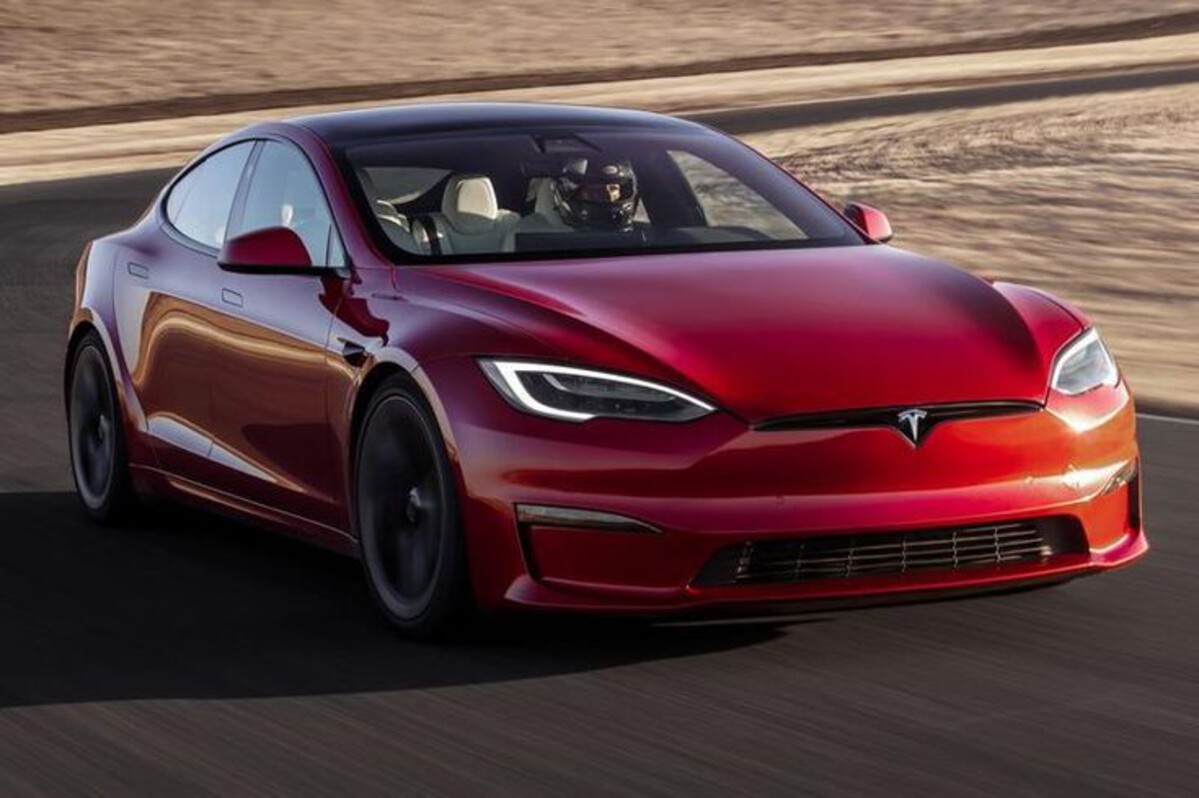
Advanced algorithms in the Model S Plaid continuously monitor battery temperature, state of charge, and ambient conditions to optimize regenerative braking performance.
The system automatically adjusts regenerative intensity when the battery is cold, gradually increasing energy recovery capability as optimal operating temperature is reached.
Similarly, when the battery approaches full charge, the system reduces regenerative braking to prevent overcharging while maintaining predictable vehicle behavior.
The Model S Plaid’s regenerative braking system demonstrates exceptional consistency across different driving conditions. Whether navigating city streets, highway cruising, or aggressive track driving, the system maintains predictable deceleration characteristics that drivers can rely on.
This consistency is achieved through sophisticated motor control algorithms that consider factors like vehicle speed, battery state, and ambient temperature to deliver a uniform regenerative braking feel.
Performance data from the Model S Plaid shows that optimal use of the fixed regenerative braking system can extend range by up to 30% in urban driving conditions compared to vehicles without regenerative braking.
The system’s ability to bring the vehicle to a complete stop using regenerative braking alone, combined with automatic engagement of friction brakes when needed, creates a seamless one-pedal driving experience that maximizes energy recovery while maintaining safety. The integration of regenerative braking with the Model S Plaid’s performance characteristics showcases Tesla’s engineering expertise.
Even during aggressive driving, where the vehicle’s tri-motor powertrain delivers over 1,000 horsepower, the regenerative braking system continues to operate effectively, recovering energy that would otherwise be lost while maintaining the vehicle’s exceptional performance capabilities.
Machine learning algorithms continuously refine the Model S Plaid’s regenerative braking behavior based on individual driving patterns. The system learns from each driver’s preferences and habits, gradually adapting regenerative braking characteristics to match personal driving styles while maintaining optimal efficiency. This personalization happens automatically, creating a customized driving experience without requiring manual adjustment.
2. Lucid Air Dream Edition
The Lucid Air Dream Edition represents the pinnacle of luxury electric vehicle engineering, featuring a fixed regenerative braking system that emphasizes refinement and efficiency.
Lucid’s approach to regenerative braking reflects the company’s commitment to creating the most efficient luxury electric vehicle possible, using advanced algorithms and sophisticated motor control to maximize energy recovery while maintaining the smooth, refined driving experience expected from a premium sedan.
Lucid’s fixed regenerative braking system operates through a carefully calibrated algorithm that considers multiple factors to optimize energy recovery.
The system automatically adjusts regenerative intensity based on battery state of charge, temperature, driving conditions, and vehicle speed, creating a seamless energy recovery experience that requires no driver intervention. This automated approach allows drivers to focus on the driving experience while the vehicle handles energy management optimization.
The Air Dream Edition’s regenerative braking system can recover up to 300kW of power during deceleration, contributing to the vehicle’s industry-leading efficiency figures.
The system’s advanced motor control algorithms ensure smooth, linear deceleration that maintains the luxury feel expected from a premium vehicle while maximizing energy recovery. This balance between performance and refinement demonstrates Lucid’s sophisticated approach to electric vehicle engineering.
Integration with the Air’s advanced driver assistance systems creates a cohesive driving experience where regenerative braking works seamlessly with features like adaptive cruise control and traffic jam assist.
The system uses the vehicle’s array of sensors and cameras to predict upcoming traffic conditions, optimizing regenerative braking intensity to match the driving situation while maintaining passenger comfort and safety.
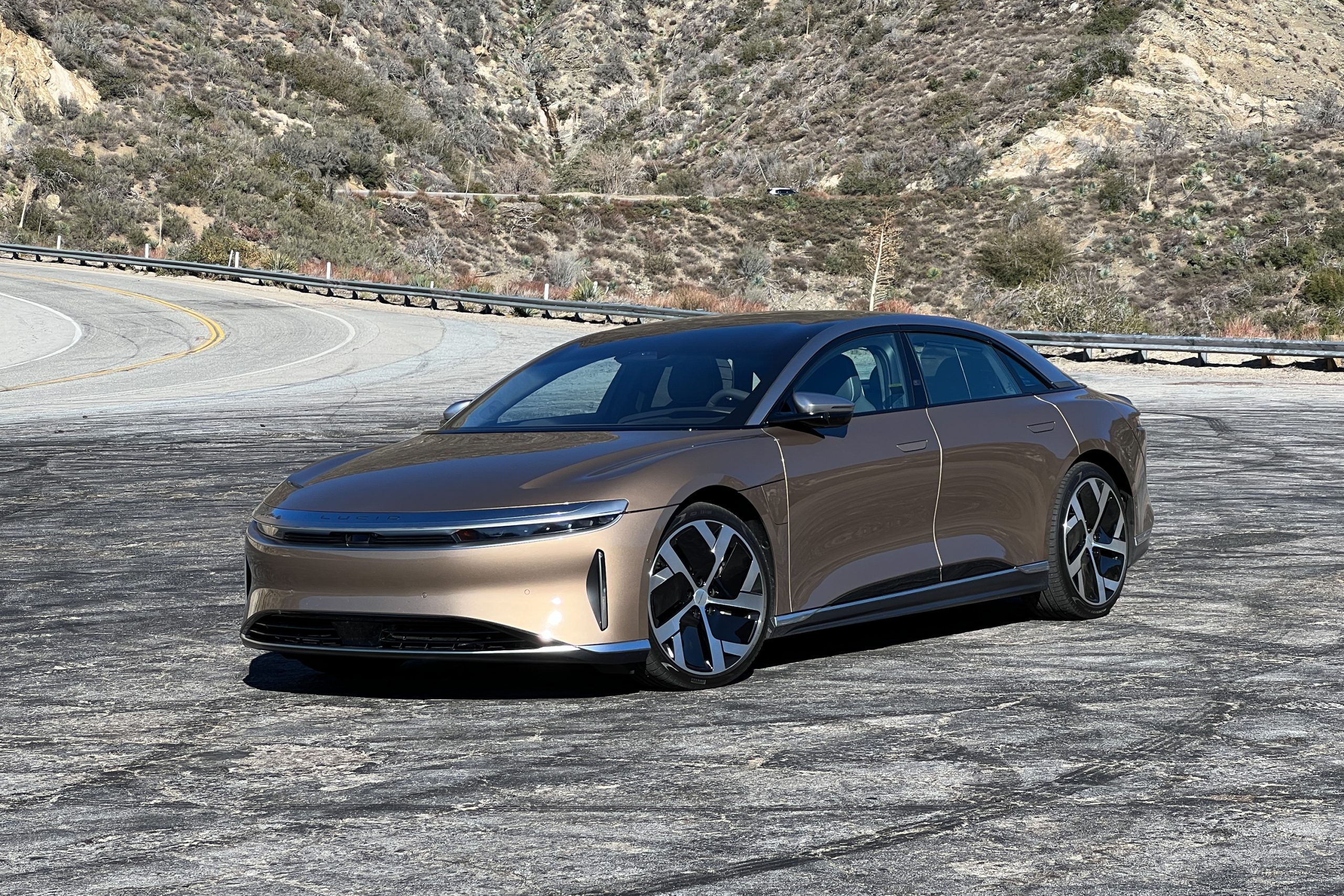
The Air Dream Edition’s regenerative braking system demonstrates exceptional thermal management, maintaining consistent performance across a wide range of operating conditions.
The vehicle’s advanced cooling system ensures that the motors and power electronics remain at optimal temperatures, allowing full regenerative braking capability even during extended periods of aggressive driving or extreme ambient temperatures.
Advanced predictive capabilities set the Air Dream Edition’s regenerative system apart from competitors. The system uses GPS data, elevation mapping, and real-time traffic information to optimize regenerative braking for upcoming road conditions.
When approaching a downhill section, the system can pre-condition the battery and motors to maximize energy recovery, while approaching uphill sections triggers optimization for minimal energy loss during ascent.
The fixed regenerative braking system in the Air Dream Edition provides remarkably consistent behavior across different driving scenarios. Whether navigating city streets with frequent stops, cruising on highways, or tackling winding mountain roads, the system maintains predictable deceleration characteristics that drivers can rely on.
This consistency is achieved through sophisticated algorithms that continuously monitor and adjust regenerative parameters based on current conditions.
Performance metrics demonstrate the effectiveness of Lucid’s approach, with the Air Dream Edition achieving up to 516 miles of EPA-estimated range partly due to its highly efficient regenerative braking system.
In real-world testing, optimal regenerative braking use can extend range by 25-30% in urban driving conditions, showcasing the system’s contribution to the vehicle’s exceptional efficiency.
The system’s integration with Lucid’s glass cockpit display provides comprehensive feedback about energy flow and regenerative braking operation.
Real-time visualizations show drivers exactly how much energy is being recovered and the impact on remaining range, creating an educational experience that helps drivers understand the benefits of regenerative braking without requiring manual system management. Machine learning capabilities in the Air Dream Edition’s regenerative system continuously adapt to individual driving patterns and preferences.
The system learns from driver behavior, gradually optimizing regenerative braking characteristics to match personal driving styles while maintaining maximum efficiency. This intelligent adaptation creates a personalized driving experience that improves over time without requiring manual adjustment or configuration.
3. BMW iX xDrive50
The BMW iX xDrive50 represents BMW’s flagship electric SUV, featuring a sophisticated fixed regenerative braking system that reflects the company’s commitment to driving dynamics and efficiency.
The iX offers a “B” mode available by toggling the gear selector for more aggressive, Tesla-like one-pedal driving, demonstrating BMW’s approach to providing driver choice within a fundamentally fixed regenerative braking architecture.
BMW’s implementation of fixed regenerative braking in the iX emphasizes the company’s traditional focus on driving dynamics while maximizing energy recovery efficiency.
The system operates through intelligent algorithms that automatically adjust regenerative intensity based on driving conditions, battery state, and vehicle dynamics, creating a seamless energy recovery experience that maintains BMW’s characteristic driving feel.
The iX’s regenerative braking system can recover up to 200kW of power during deceleration, contributing significantly to the vehicle’s efficiency despite its substantial size and weight.
The system’s calibration reflects BMW’s extensive experience with electric and hybrid powertrains, creating regenerative braking characteristics that feel natural and predictable while maximizing energy recovery across a wide range of driving conditions.
Advanced integration with BMW’s driver assistance systems creates a cohesive driving experience where regenerative braking works seamlessly with features like adaptive cruise control and traffic jam assistant.
The system uses the vehicle’s comprehensive sensor suite to predict upcoming traffic conditions and road geometry, optimizing regenerative braking to match the driving situation while maintaining the dynamic driving characteristics BMW is known for.
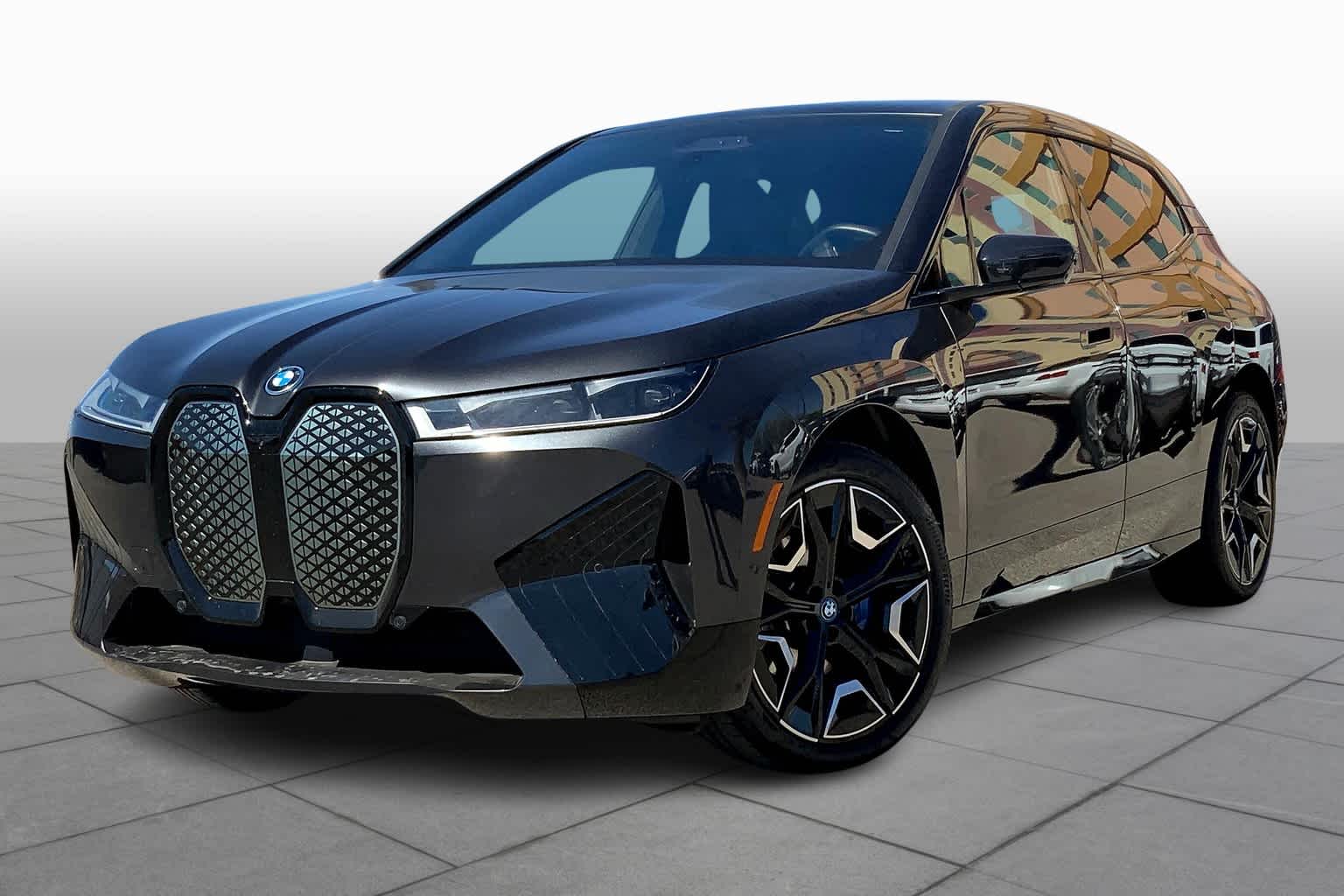
The B mode in the iX provides more aggressive regenerative braking for drivers who prefer one-pedal driving, while the standard mode offers more traditional driving feel with moderate regenerative braking.
This dual-mode approach allows BMW to satisfy different driver preferences while maintaining the automated benefits of fixed regenerative braking. The transition between modes is seamless, requiring only a simple gear selector movement.
BMW’s approach to regenerative braking efficiency focuses on real-world usability and driving dynamics rather than maximum theoretical recovery.
The system typically recovers 20-25% of the energy that would otherwise be lost during braking, with higher recovery rates in conditions where regenerative braking is most beneficial. The iX’s regenerative system is calibrated to provide smooth, predictable operation that enhances rather than compromises the driving experience.
The integration of regenerative braking with the iX’s all-wheel-drive system demonstrates BMW’s systems engineering expertise. The system optimizes energy recovery from both front and rear motors based on current traction conditions and vehicle dynamics, ensuring maximum energy recovery while maintaining stability and predictable handling characteristics.
This sophisticated coordination reflects BMW’s commitment to maintaining driving dynamics even in electric vehicles. Advanced thermal management in the iX ensures consistent regenerative braking performance across a wide range of operating conditions.
The vehicle’s sophisticated cooling system maintains optimal temperatures for motors and power electronics, allowing full regenerative capability even during extended periods of aggressive driving or extreme ambient temperatures. This thermal management reflects BMW’s experience with high-performance electric drivetrains.
The iX’s regenerative braking system provides comprehensive feedback through the vehicle’s advanced instrument cluster and heads-up display. Real-time information about energy recovery, power flow, and the impact of regenerative braking on efficiency helps drivers understand the system’s operation while maintaining focus on the road ahead.
This integration of information display with regenerative braking operation demonstrates BMW’s attention to driver experience. Predictive capabilities in the iX’s regenerative system use GPS data and learned driving patterns to optimize energy recovery for upcoming road conditions.
The system can pre-condition battery and motor temperatures when approaching sections where aggressive regenerative braking is anticipated, ensuring optimal energy recovery capability when needed. This predictive approach maximizes the benefits of regenerative braking while maintaining the seamless operation expected from a luxury vehicle.
4. Polestar 2
The Polestar 2 represents Volvo’s performance-oriented electric vehicle brand, featuring a fixed regenerative braking system that emphasizes simplicity, efficiency, and driving engagement.
Polestar provides the option to turn regenerative braking off entirely, and while there are no dedicated brake modes, this flexibility gives the pedal the most reassuring, natural feel, demonstrating the company’s commitment to providing driver choice within a streamlined regenerative braking architecture.
Polestar’s approach to fixed regenerative braking reflects Scandinavian design principles of simplicity and functionality. The system operates automatically when the accelerator pedal is released, providing consistent, predictable deceleration that maximizes energy recovery while maintaining the engaging driving characteristics expected from a performance-oriented vehicle.
The system’s calibration emphasizes linear response and predictable behavior across all driving conditions. The Polestar 2’s regenerative braking system can recover up to 150kW of power during deceleration, contributing to the vehicle’s impressive efficiency figures while maintaining the sporty driving dynamics that define the Polestar brand.
The system’s integration with the vehicle’s performance-oriented chassis tuning creates a cohesive driving experience where energy recovery enhances rather than compromises driving engagement.
Advanced algorithms in the Polestar 2 continuously monitor driving conditions, battery state, and vehicle dynamics to optimize regenerative braking performance.
The system automatically adjusts regenerative intensity based on factors like battery temperature, charge level, and ambient conditions, ensuring consistent operation while maximizing energy recovery. This automated optimization allows drivers to focus on the driving experience while the vehicle handles energy management.

The integration of regenerative braking with Polestar’s advanced safety systems demonstrates the company’s commitment to comprehensive vehicle intelligence.
The system works seamlessly with features like adaptive cruise control and collision avoidance, using the vehicle’s sensor array to optimize regenerative braking based on upcoming traffic conditions and potential hazards. This integration creates a more sophisticated and safer driving experience.
Polestar’s option to completely disable regenerative braking provides flexibility for drivers who prefer traditional braking feel or specific driving conditions where coasting is preferred.
This choice reflects the company’s understanding that different driving scenarios may benefit from different regenerative braking approaches, while the default fixed system provides optimal efficiency for most driving conditions.
The Polestar 2’s regenerative braking system demonstrates excellent consistency across different driving scenarios, from city traffic to highway cruising to spirited driving on winding roads.
The system maintains predictable deceleration characteristics that drivers can rely on, while sophisticated algorithms ensure optimal energy recovery across the full range of operating conditions. This consistency is crucial for building driver confidence and trust in the regenerative braking system.
Performance data shows that the Polestar 2’s regenerative braking system can extend range by up to 20% in urban driving conditions compared to vehicles without regenerative braking.
The system’s ability to provide strong regenerative braking while maintaining the engaging driving characteristics expected from the Polestar brand demonstrates the company’s skill in balancing efficiency with performance. The integration of regenerative braking feedback into the Polestar 2’s minimalist interior design reflects Scandinavian aesthetic principles.
Essential information about regenerative braking operation is presented through the vehicle’s digital instrument cluster in a clear, uncluttered format that provides necessary feedback without overwhelming the driver with unnecessary information.
Machine learning capabilities in the Polestar 2’s regenerative system adapt to individual driving patterns over time, optimizing regenerative braking characteristics to match personal driving styles while maintaining maximum efficiency.
This intelligent adaptation happens transparently, creating a personalized driving experience that improves with use while maintaining the simplicity and predictability that define the Polestar brand.
5. Rivian R1T
The Rivian R1T represents a new approach to electric vehicle design, combining adventure-ready capability with sophisticated regenerative braking technology.
As an electric truck designed for outdoor enthusiasts and commercial applications, the R1T’s fixed regenerative braking system must deliver consistent performance across a wide range of conditions while maximizing energy recovery for extended range capability.
Rivian’s approach to fixed regenerative braking emphasizes robustness and reliability, critical characteristics for a vehicle designed to operate in challenging environments.
The system operates automatically when the accelerator pedal is released, providing consistent deceleration that maximizes energy recovery while maintaining the predictable behavior essential for towing and hauling applications. The system’s calibration reflects Rivian’s understanding of truck buyers’ expectations for reliable, consistent vehicle behavior.
The R1T’s regenerative braking system can recover up to 275kW of power during deceleration, an impressive capability that reflects the vehicle’s substantial mass and high-performance electric powertrain.
The system’s integration with the R1T’s quad-motor all-wheel-drive system creates sophisticated energy recovery that can independently manage regenerative braking at each wheel, optimizing both energy recovery and vehicle stability across diverse terrain conditions.
Advanced algorithms in the R1T continuously monitor vehicle load, trailer weight, road conditions, and driver inputs to optimize regenerative braking performance.
When towing heavy loads, the system automatically adjusts regenerative characteristics to maintain predictable braking behavior while maximizing energy recovery.
This intelligent adaptation ensures that the regenerative braking system enhances rather than compromises the vehicle’s towing and hauling capabilities.
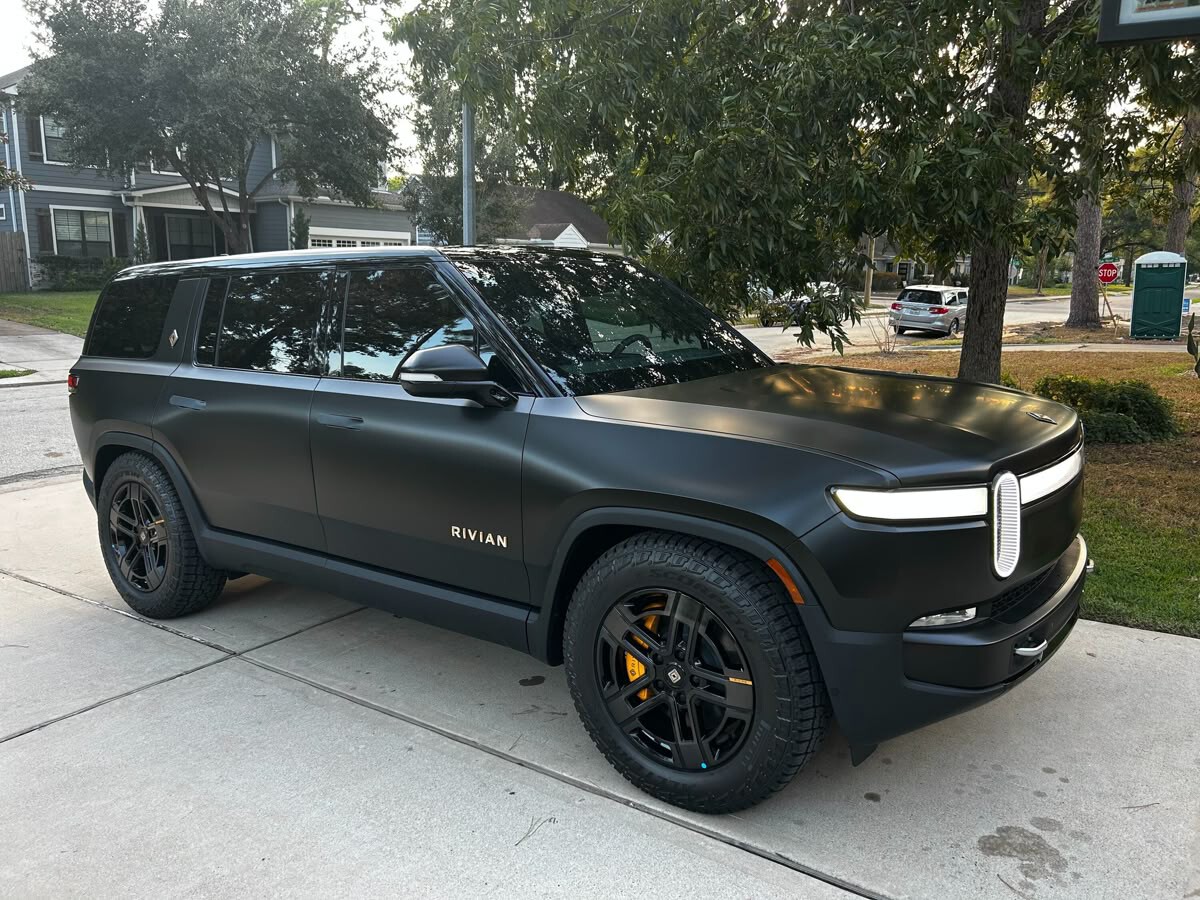
The integration of regenerative braking with Rivian’s advanced off-road systems demonstrates the company’s innovative approach to electric vehicle capability.
The system works seamlessly with features like Rock Crawl mode and Sand mode, automatically adjusting regenerative braking characteristics to match the selected terrain setting.
In off-road conditions, the system can reduce regenerative intensity to prevent wheel lockup on loose surfaces, while maintaining maximum energy recovery when conditions permit.
Rivian’s Tank Turn feature, which allows the R1T to rotate in place by spinning wheels on opposite sides in different directions, showcases the sophisticated control possible with independent motor systems.
During this maneuver, the regenerative braking system works in coordination with drive motors to provide the precise control needed for this unique capability while recovering energy from the motors acting as generators.
The R1T’s regenerative braking system demonstrates exceptional thermal management, crucial for a vehicle designed to operate in extreme conditions.
The system maintains consistent performance across temperature ranges from -40°F to 120°F, with advanced cooling systems ensuring that motors and power electronics remain at optimal operating temperatures.
This thermal management capability is essential for maintaining regenerative braking performance during extended off-road adventures or heavy-duty commercial use.
Performance metrics show that the R1T’s regenerative braking system can extend range by up to 25% in typical driving conditions, with even higher gains possible in stop-and-go traffic or mountainous terrain where regenerative braking is most beneficial.
The system’s ability to maintain high energy recovery rates even when towing heavy loads demonstrates Rivian’s engineering focus on real-world utility and efficiency.
The integration of regenerative braking feedback into the R1T’s driver information systems provides comprehensive data about energy recovery and system operation.
The vehicle’s large touchscreen display can show real-time energy flow, regenerative power levels, and the impact of regenerative braking on remaining range. This information helps drivers understand how their driving style affects efficiency and range, encouraging more efficient driving habits.
Advanced predictive capabilities in the R1T use GPS data, topographical information, and learned driving patterns to optimize regenerative braking for upcoming terrain conditions.
When approaching steep descents, the system can pre-condition the battery and motors to maximize energy recovery, while approaching challenging off-road sections triggers optimization for traction and control rather than maximum energy recovery.
The R1T’s regenerative braking system also incorporates Rivian’s innovative Camp Mode, where the vehicle can use recovered energy to power external devices and accessories.
This integration demonstrates how regenerative braking can be part of a comprehensive energy management strategy that extends beyond simple range extension to enable new use cases and capabilities.
Machine learning algorithms in the R1T continuously adapt regenerative braking characteristics based on individual driving patterns, load conditions, and usage scenarios.
The system learns from driver behavior and typical usage patterns, optimizing regenerative braking to match specific needs while maintaining maximum efficiency. This intelligent adaptation is particularly valuable for commercial users who may have consistent routes and load patterns.
Also Read: 5 Sedans With the Best Biometric Entry and 5 With Only Key Fobs

